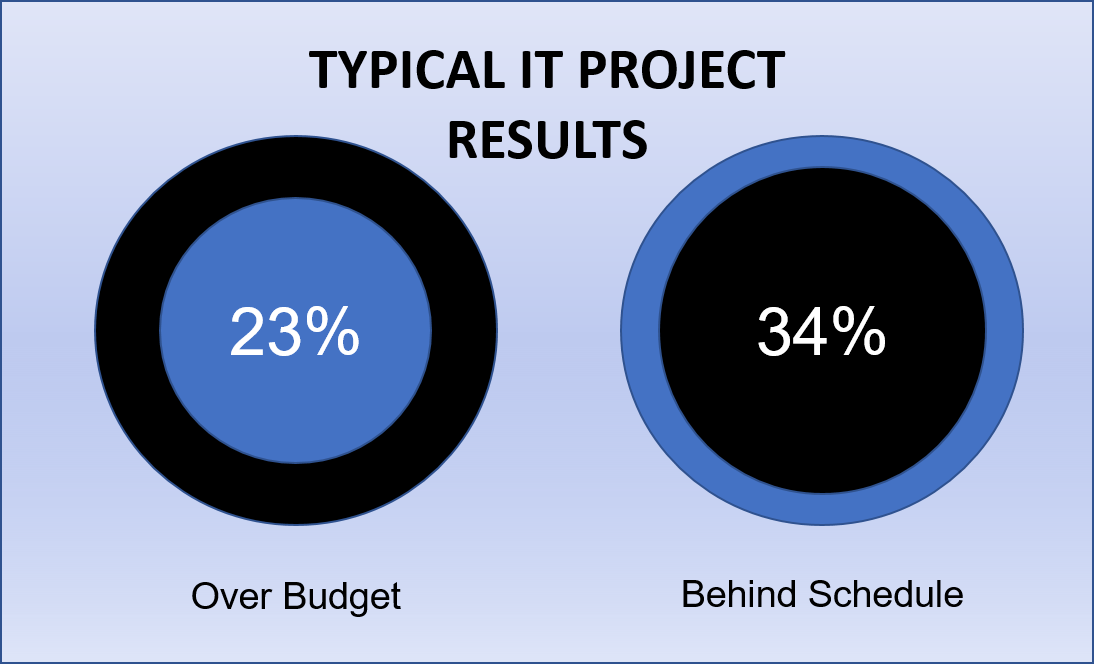The Project Challenge
IT has become a critical component of every business. From the smallest organization using e-mail and an online accounting service to the largest retail organizations fulfilling billions of dollars in purchases, the requirement for ubiquitous access is a necessity. At the same time, a number of different factors including the way people access that data, data security threats, and compliance requirements have increased the complexity of even the smallest environment. Keeping pace with the changes that are taking place while managing the day-to-day requirements of the business is no easy task. It should come as no surprise, then, that according to research from the Harvard Business Review, IBM, and McKinsey, many projects run over budget and are not completed on-time. When they are completed, the often don't deliver the value they promised. One study found that up to 15% of large projects are abandoned altogether.
for ubiquitous access is a necessity. At the same time, a number of different factors including the way people access that data, data security threats, and compliance requirements have increased the complexity of even the smallest environment. Keeping pace with the changes that are taking place while managing the day-to-day requirements of the business is no easy task. It should come as no surprise, then, that according to research from the Harvard Business Review, IBM, and McKinsey, many projects run over budget and are not completed on-time. When they are completed, the often don't deliver the value they promised. One study found that up to 15% of large projects are abandoned altogether.
Why Do Projects Miss the Target?
No one starts a project thinking it won't hit the target. So why do projects cost more than expected and take longer than anticipated? There are a number of different reasons.
- Unclear objectives
- Lack of focus on the project due to competing priorities
- Changing requirements during deployment
- Unrealistic scheduling due to underestimation of complexity
- Lack of technical skills to complete the project
How Can We Help?
Keeping a project on-track begins well before the implementation begins. It requires planning and preparation to define the need and objectives, validation of the technical qualifications, and experience to create a realistic timeline. If any of these elements are missing, the project will likely join the ranks of over-budget with a longer-than-expected timeline.
TTL can help by providing guidance during the business requirements gathering, the design phase, the implementation, and the post-implementation review and support. Following a defined methodology, TTL can remove uncertainty from the project process.
Specific Projects
Areas of focus center around building the infrastructure to support business needs. This includes a combination of on-premises and cloud solutions. These projects include the following:
- Disaster recovery and business continuity planning, implementation, and testing
- Adding new sites to an existing network including planning, design, network integration, and day 1 support
- Planning and design for replacement of end of life hardware or software
- Design and support for cloud transition including hybrid cloud
- Wireless design and implementation including high-density environments
- WAN transition between service providers or to new technologies like NFV
- Network services and cloud vendor comparisons and recommendations

